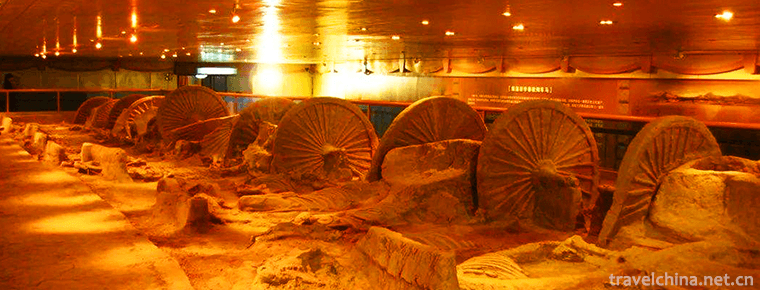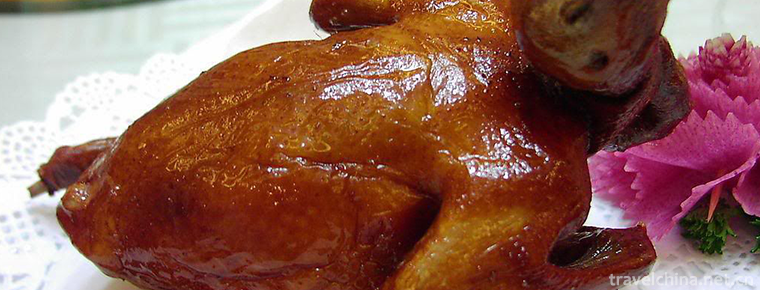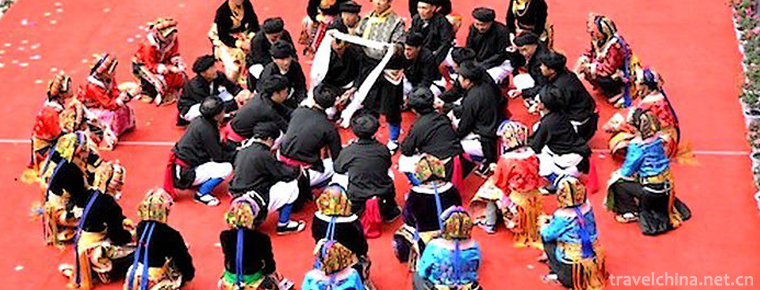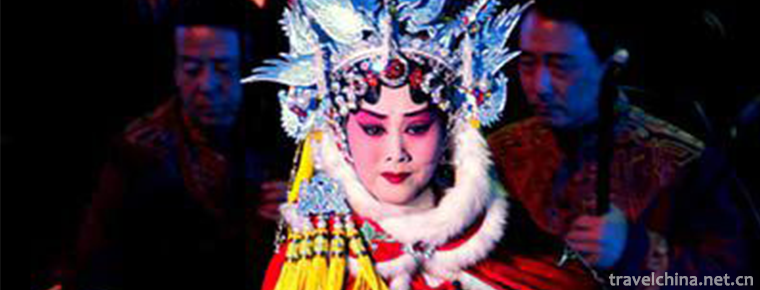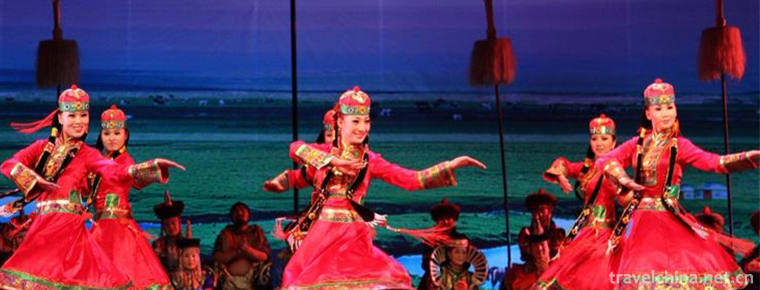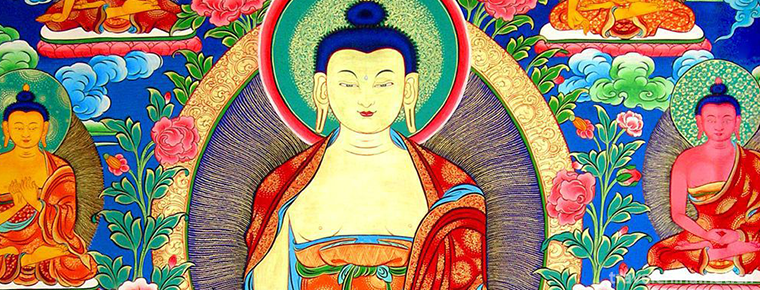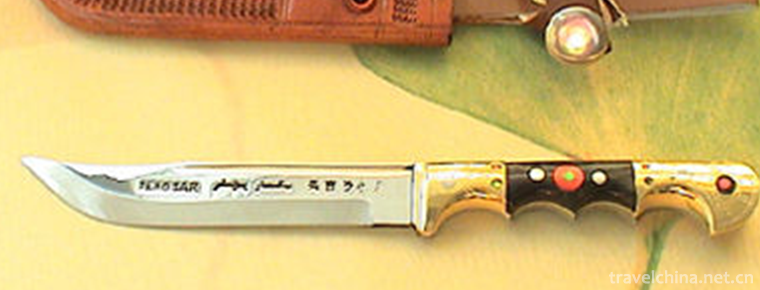Seven Stars Scenic Spot
Seven Stars Scenic Spot/Qixing Scenic Spot is located on the East Bank of Lijiang River in Guilin City, along Xiaodong River, a tributary of Lijiang River, 1.5 kilometers away from the city center. It covers an area of about 134.7 hectares and has a green coverage rate of 84%. It is the largest, oldest and most concentrated comprehensive scenic spot in Guilin. The profound and profound history and culture converge in the seven stars, and the perfect integration of nature and humanity is displayed in the seven stars. It can be called the epitome of Guilin landscape and culture, the green lung of Guilin city, and the epitome of Guilin landscape, water, cave, stone, courtyard, architecture and cultural relics.
Practical information
Ticket information
Seven Star Scenic Spot 60 yuan per person, there are some scenic spots also need additional fees, Seven Star Rock needs an additional admission ticket 60 yuan, rock climbing ticket 75 yuan, Seven Star + Zoo 99 yuan, field ticket 75 yuan.
Opening Hours
The opening time of Qixing Scenic Spot is 6:00-19:30 in summer (March-November) and 6:30-19:00 in winter (December-February next year). The opening time of small scenic spots is different. The main opening time of Qixing Rock is 8:00-17:30.
Traffic information
1. In addition to walking tours, paid sightseeing bottle cars can be provided throughout the scenic area.
2. Bus 10, 11, 14, 18, 21, 24, 25, 30, 97, 204 and 206 can reach the Huaqiao Gate (Qixing Park Station)
3. Bus No. 14, No. 30 and No. 214 can reach the gate of the scenic hump (Longyin Primary School) (Sanlidian Station)
4. Bus No. 10, No. 21, No. 24 (Xiangjiankan Crossing Station), No. 204 and No. 206 (Xiangjiankan Crossing Station) can reach Qixia Gate (Jiankan Crossing Station) in scenic spot.
5. Bus 14, 25 (Shijiayuan Crossing Station) and 30 (Keda Scenic Area Longyin Bridge (Guihai Stele Forest) Gate (Longyin Bridge Station)
Introduction
Qixing Park is the largest comprehensive park in Guilin City. It is located on the East Bank of Lijiang River in Guilin City. It is 1.5 kilometers away from the city center and covers a total area of 137.4 hectares. The combination of natural and human landscapes in the park, including a zoo, is a masterpiece of Guilin Park. Looking down from the sky, the seven peaks of the Seven Stars Park are like the Big Dipper in the sky. There are three peaks in front of them, which are called "Crescent Crescent Mountain" like dowels. To the north, there are four peaks, which are called "Putuo Mountain" like dippers. Two mountains and seven peaks, like Tianshan's "Big Dipper Seven Stars", collectively known as "Seven Stars Mountain".
Seven Star Park and Seven Star Rock are also named for this. In addition to the famous Seven-Star Rock, there is also the Guihai Stele Forest Museum, a national key cultural relic protection unit. Famous scenic spots include "Beidou Seven Stars", "Huaqiao Hongying", "Moon Wonderland", "Dragon Hidden Miracle", "Putuo Stone Forest", "Qixia Real Land", "Hushan Cabernet", "Guihai Stele Forest", "Chinese Light" and "Bonsai Art Garden". The whole park is beautiful and spacious, and has become a tourist attraction as early as the Sui and Tang Dynasties. Deng Xiaoping, Clinton and many other Chinese and foreign celebrities and heads of government have visited the park. There are four gates in Qixing Park. When you visit the park, you can try not to go back and arrange the routes reasonably. Seven Star Park - Modern City Park has a variety of ecological environment and service facilities, with recreation, tourism and other functions.
Located on the East Bank of Lijiang River in Guilin, Qixing Scenic Spot is 1.5 kilometers away from the city, named for Qixing Mountain Qixing Rock. It covers an area of 134.7 hectares and has become a microcosm of Guilin's mountains and waters. It has become a tourist attraction since the Sui and Tang Dynasties, and now it has become a world tour. Tourist organizations recommend scenic spots, the first batch of AAAA scenic spots in China, key national scenic spots and core scenic spots in Guilin, and have passed ISO14001 international environmental management system and ISO9001 international quality management system certification. In addition, for more than a thousand years, the four major religious beliefs in China, Buddhism, Taoism, Islam and Confucianism, have influenced the scenic spots successively, imprinted a distinct religious and cultural brand on them, and endowed the scenic spots with a unique charm of the "four in one religion".
The park has scenic spots such as "Big Dipper Seven Stars", "Camel Cabernet", "Crescent Moon Rainbow Shadow" and "Putuo Stone Forest", which possess the beauty of mountains, rivers, caves and stones. Famous scenic spots include Qixing Rock, Longyin Cave, Crescent Rock, Zenggongyan Rock, Camel Hill, Longyan Rock and Huaqiao, Crescent Tower, Children's Paradise, Zoo, Tomb of Three General and 800 Strong Men, Mosque, Bonsai Art Garden, Guihai Stele Forest, etc.
When President Clinton visited China in 1998, he delivered an environmental speech at the foot of Camel Hump. There are more than 200 stone inscriptions in Guihai Stele Forest, covering politics, economy, military affairs, culture and folklore, in the form of poetry, prose, songs, fu, couplets, images, etc. There are regular scripts, grass scripts, official scripts, seals and so on. One of the most famous is the Yuanyou Party Register Stele.
According to historical records, in order to exclude dissidents, Premier Cai Jing of the Song Dynasty listed more than 300 people, such as Sima Guang and Su Shi, as Yuanyou Party. Huizong of the Song Dynasty ordered the whole country to inscribe stone tablets, which were destroyed by decree the following year. Longyin Rock is the only complete tablet in the country. It is the witness of the Party struggle in the Song Dynasty and also a historical treasure.
Main attractions
Seven Star Park is named for its mountains. It gathers camel hump, Putuo Mountain, Seven Star Rock, Crescent Mountain and Guihai Stele Forest. It is a must-visit place for visitors. The main tourist attractions in the scenic spot are as follows:
Seven Star Mountain
On the East Bank of the Lijiang River, 1.5 kilometers away from the city center, it is composed of four peaks of Putuo Mountain, Tianxuan, Tianju, Tianquan and Yuheng, Kaiyang and Yaoguang. The elevations are 265, 255, 241 and 250 meters respectively. The seven peaks are almost on one level. The Putuo crescent moon, East and west, belongs to each other, such as the Big Dipper in space, from which the mountain name comes. The mountain area is 51.5 hectares, which is famous for its many caves. Outside Qixing Rock, there are dozens of caves, such as Yuanfeng, basalt, Baihe Cave, Sixianyan Rock and Zeng Gongyan. The stone forests of Putuo Mountain stand out. The bonsai garden under the hump, which gathers the victory of stone trees in Guilin, is vigorous and upright, and has an extraordinary bearing. More precious, there are more than 500 stone carvings since the Sui and Tang Dynasties.
The Seven Star Crag
Located in the hinterland of Putuo Mountain in Qixing Park, it is the first AAAA class scenic spot in China. The cave is about 1100 meters long, 54 meters wide and 27 meters high. It is an ancient underground river 1 million years ago. Qixing Rock, also known as Qixia Cave and Bixuyan, was named after the Song Dynasty. The rock was originally an underground riverbed, and later, due to crustal changes, the underground river rose and exposed to the ground to become a cave. Later, in the long years, rainwater infiltrated through the rock crevices, dissolved limestone, and crystallized in the cave, thus forming many spectacular natural scenes such as stalactites, stalagmites, pillars, mantles, stone flowers and so on. Qixing Rock is now one of the most famous tourist attractions in Guilin. Seven star rocks are divided into upper, middle and lower layers. The upper layer is the remnants of the dome and the lower layer is the underground river which is still developing. Now for sightseeing is the middle layer, the widest 43 meters, the highest 27 meters, the entire journey 814 meters, the temperature of the hole is kept at about 20 degrees centigrade all the year round. The cave is divided into 6 cave days and 35 sceneries, which are vivid and spiritual. The whole cave is magnificent and profound, as magnificent as the fairy tale world, and is known as the "immortal cave mansion".
As early as 1300 years ago, that is, from the Sui and Tang Dynasties, Qixing Rock has become a tourist attraction, leaving over 120 inscriptions. Xu Xiake, a great traveler, visited Seven Stars Rock twice in Chongzhen Ming Dynasty. Former US President Clinton also visited Seven Stars Rock with great interest in 1998. Ye Jianying, an old revolutionary, wrote that "the ocean washes away the caves of mountains and rivers, and the stone ice solidifies the jade moulding mountain". The caves offer refuge for thousands of years, and the tourists enjoy Yao, Shun and Tian. Ming Dynasty painter Zhang Wenxi called it "the first cave sky" and carved it on the stone wall, which became the first sight that visitors could see in the cave. Qixing Rock (the first cave of Qixia Real Land) is one of the eight classic sceneries in Guilin. The main attractions are: Gurong greeting guests, Jiangshan multi-Jiao, Liu Sanjie singing platform, Jiulong Water Play and Bianzhai scenery.
Tianzhu stone
It's west of Qixing Park and east of Huaqiao. The stone stands tall and upright like a pillar, so it has the name of "Tianzhu". It is also known as "Lotus Stone" if it has not been put on. The stone is about 10 meters high, inscribed with seven characters "Long live Mao Zedong Thought". Lingjianjiang River lies to the north, and pavilions are built on rocks in the middle of the river. The southeast is lush and shady. There are small-leafed banyan on the rocks, pavilions and pavilions are covered. The north of Tianzhu is inscribed with flood markers of Chongning 5 years (1106) and Guangxu 11 years (1885), which are important data for studying ancient hydrology. Zhou Yi, a famous poet in Lingui in the late Qing Dynasty, once lived under Tianzhu Peak. He had a small print of "Tianzhu Peak's Family" which was often covered in a note.
Huaqiao
It is the oldest bridge in Guilin. It was built in the reign of Jiaxi in Song Dynasty. Located at the main gate of the park, it spans over the confluence of Xiaodongjiang River and Lingjianxi River and is 135 meters long. The bridge deck has a windy corridor, the bridge pavilion is covered with green glazed tiles, the bridge body is a rock, with a strong national style. Every spring and summer, the flowers blossom in full bloom, and the bridges are full of beautiful flowers. Peach blossoms and emerald bamboos are planted on both sides of the bridges. The bridges are hidden in the "Manxi River and Banxi Flowers", hence the name of the bridges.
Before 1949, part of the piers of the Shiqiao Bridge sank and the railings collapsed. After renovation in 1965, the bridge was 134.66 meters long and consisted of two sections, namely, water and drought. The water bridge is 6.9 meters wide and has four arches. The arch circle reflects the water surface. It looks like a full moon. The four-hole bridge, which is reconstructed according to the original style, is made of bluestone. Under the bridge, four semi-circular bridge holes and their reflection in the water form four jade plates, which are like the full moon, just like the beautiful scenery praised in the poem "four bright moons with lotus, half into the Chengjiang semi-hua rainbow". Has the "flower bridge rainbow shadow" reputation. The dry bridge is 5.3 meters wide and has 7 small arches. There are wind and rain corridors on the water bridge.
Viewing at Huaqiao, the scenery is beautiful and elegant, which makes people relaxed and happy. However, the most noticeable thing is to watch the moon, which reflects the moon in the water and the moon in the bridge. Four holes facing the water, the full moon is countable, it is: Huaqiao often has a month, the eyes of several reunions.
Mount Putuo
It is the main body of Qixing Park. It consists of four peaks: Tianshu, Tianxuan, Tianjie and Tianquan in the north of Shanxi Province. At 265 meters above sea level, it is commonly known as Putuo because of the worship of Guanyin Bodhisattva on the mountain. Putuo Mountain is rich in landscapes, caves and pavilions. Among them, Qixing Rock is the most famous, and Pavilion is particularly unique in Qixia Pavilion and Bixuting Pavilion. At the West foot of the mountain is the Yuanfeng Tunnel, which is very hot in midsummer, but the cool wind is blowing here. It is not far north along Osmanthus Forest Avenue from here, Putuo Gate, the entrance to the mountain. There are many landscapes on the mountain, such as Putuo Stone Forest, Putuo Tower, Guanyin Cave, Xuanwu Pavilion and so on. Up to the Star-picking Pavilion on Tianji Peak, you can see the magnificent scenery written by Liu Kezhuang, the great poet of the Song Dynasty, "Thousand peaks stand around the wild, one water embraces the city flow".
There are many cultural relics and monuments in Putuo Mountain. There are more than 200 stone carvings. The most precious ones are Yan Zhenqing's "Xiaoyao Tower" in Tang Dynasty, Fan Chengda's "Bixuming" in Song Dynasty and the relief of "Turtle and Snake in One" in Ming Dynasty.
Camel Hill
Camel Hill (Hump Hill) is located behind Mount Putuo, which looks like a camel squatting on the ground. It is also called Hushan or Jiuhushan because it resembles an ancient wine pot. Because it resembles a camel, so it is named. In the late Ming Dynasty, famous scholars in Jiangnan lived here and planted peach blossoms everywhere. Every spring, peach blossoms flourish and blossom like a red glow. It seems that the Camel Hill is covered with a red glow. The scenery is extremely beautiful, which the ancients call it.
The "Camel's Cabernet" landscape is one of the ten landscapes in Guilin. In July 1998, President Clinton gave a speech on environmental protection on the lawn in front of Camel Mountain after holding a symposium on environmental protection with Chinese folk people in the Bonsai Art Garden near the mountain. He said it while shaking a folding fan in Guilin and jokingly called it "energy-saving air-conditioning". Every morning and evening, the sunshine reflects the rocks of Yaoshan. They are very beautiful and magnificent. Since the Ming and Qing Dynasties, peach trees have been planted all over the hills. If spring comes, peach blossoms are in full bloom and Jiangxia Ziwu is particularly enchanting. Therefore, "Hushan Cabernet" is one of the eight new sceneries in Guilin in the Qing Dynasty. There are pavilions and pavilions around the mountain, such as zoo, bonsai art garden, flower garden tea room and so on. Camel Mountain is related to the Thunder Drinker, and the Thunder Drinker is related to the Wine. Lei Jingren, formerly known as Lei Mingchun, was a bright worker. At the end of Ming Dynasty, Confucian scholars in the south of the Yangtze River fled to Guilin and stayed under the mountains. Lei Mingchun likes to drink, often not drunk. Some people call him "Thunder Drinker". He is good at poetry and prose, and has written works such as "Grand Wen Shen" and "Tian Hai Zhi of Guilin". He also planted peach blossoms in front of and behind the mountains. Every spring, when peach blossoms blossom year after year, the hump is more vigorous and energetic among the flowers. After Ray died, he was buried under Camel Hill. Fan Shu, Zhixian County, Lingao County, Guangdong Province, inscribed the five words "Tomb of the Thunder Drinker" on the camel neck of Camel Mountain in the fifty-second year of Kangxi reign. He expressed his admiration for his willingness to help others, his morality and integrity. Peach blossom is still, osmanthus trees become forests, flowers and fruits are full of gardens, "Hushan Cabernet" is more gorgeous and colorful.
Protecting stele Pavilion
It's on the east side of the mountain gate at the south foot of Putuo Mountain. It was built in 1974 to protect the precious stone inscriptions in Tang Yan Zhenqing's book "Xiaoyao Tower" and Song Li Yanbi's "The Story of the South Hunan Tower", which are inscribed on both sides of Yin and Yang. Because "Xiaoyao Tower" comes from everybody's handwriting, the stele Pavilion is also called "Xiaoyao Pavilion". The Pavilion is 4.5 metres high, 6.7 metres long, 4.6 metres deep and 30.6 square metres in area. It is a four-pillar, single eave and green tile antique building with reinforced concrete structure. It is simple and elegant, and does not compete with famous monuments, and has the function of protecting monuments and meeting scenery. Entering the stele pavilion, enjoying the art of calligraphy, browsing local chronicles and gardens is really a pleasure. In the pavilion, there was also Ming Baoyu's "Rebuilding the Monument of the City of Guangxi Province", which has been moved by him.
Star Pavilion
Located at the top of Tianji Peak, Qixing Mountain, 248 meters above sea level, with single eaves, 8 columns and 8 corners, concrete structure, 5.2 meters in length and width, 6.5 meters in height and 27.04 square meters in area, was built in 1958. Pick Star Pavilion is the only Pavilion on the seven peaks of Qixing Mountain. It stands on the pavilion and can be seen in the open. Yaoshan, Tiansheng, Screen and Maoer Mountain are overlooked in the east; Yushan, Caicai, Zhangbo, the mountains of the elderly and the clear Lijiang River are expected in the north; elephant trunk and Nanxi are appreciated in the west, so they used to be known as the "Open View Pavilion".
Three general tomb
Wangping on the hillside of Putuo Mountain. In November 1944, in the Guilin defense war against the Japanese aggressor army, Lu Junmeng, Chief of Staff of the 31st Army, Chen Jihuan, Chief of Staff of the Command of the Fangshan Army, and Kuan Weiyong, Chief of the 131st Division, sacrificed heroically. In 1946, the Kuomintang government built the Tomb of the Three General to commemorate it. Chiang Kai-shek, Li Zongren and Bai Chongxi all had inscriptions. In 1982, the cemetery was rebuilt in the shape of a gourd, with a width of 16 meters and a length of 20 meters, covering an area of 320 square meters.
Crescent Hill
Located in the south of Mount Putuo, it is composed of seven peaks on the south of Mount Qixing. It is named for its crescent rocks on the mountainside, overlooking a crescent moon. Because there are Longyin Cave and Longyin Rock in the mountain, it is also called Longyin Mountain. Crescent Moon Mountain has a crescent tower, where vegetarian food has a history of 100 years, nun's face is the most famous. Walking along the foothill trail southwest, you can go to the Moon Pavilion. From this, you can see that the flower bridge is reflected in the clear Xiaodongjiang River, which is very poetic. It is not far ahead to reach Crescent Rock and Jianjiang Pavilion. Down the hill to the south, they enter Longyin Cave. There is a natural winding dragon-shaped stone trough on the top of the cave. The book on the mouth of the cave has four big characters "breaking the wall and flying". Legend has it that this place is the "Dragon Relics" left by the dragon flying into the air. From this, the ancients left a poem "flying for thousands of years, so far, a little dragon scales are opened".
GUI Hai stele
Longyin Cave and nearby Longyin Rock stele inscriptions such as the right, so that "Biyuan Wanshi", it is called Guihai Stele Forest. There are more than 220 stone inscriptions in the stele forest, including economic, military, cultural and folk customs, in various forms, such as poetry, prose, song, fu, couplets, images, etc. The style of writing is regular script, grass, official script, seal and so on. They have very high historical value and appreciation value of calligraphy art.
Guihai Stele Forest Stele Cabinet has collected thousands of important stone rubbings from other mountains and rocks in Guilin, which are rare and precious. The Map of Jingjiang Fucheng, which is developed from the North Parrot Mountain of Guilin City, is one of the two oldest ancient stone carving maps in China and the largest stone carving map in China. The earliest use of landscape symbols in this map is a major innovation in the history of map design. In addition, Han Yunqing's Songs of Pingman and Shun Miao Monument in the Tang Dynasty recorded the experience of the Tang Dynasty's stabilization of Pan Chang'an, the chief of the Xiyuan Chieftain; Kong Yanzhi's Records of Banyi Thieves in the Song Dynasty and Yu Jing's Records of Pingman in the Great Song Dynasty described the situation of the Song Dynasty's stabilization of Ouxifan in Yizhou; Chen Mishou's Records of Xinhuanku in the Southern Song Dynasty and Li Zengbo's Records of the Gong Monument South, Guangxi, Hunan, and Song Jun's interception.
Crescent building
It is a famous building in Guilin. It is located at the north foot of Yuheng Peak in Crescent Moon Mountain. The building has three floors and can accommodate 500 people at the same time. There are restaurants, small shops, vegetarian restaurants in the middle, banquet halls and scenic buildings in the upper, and more than ten state banquet boxes on the second and third floors. The main building is 31 meters long and 13 meters deep, with a total area of nearly 1200 square meters. There is an overhead corridor behind the building which connects with the arbor in Houshan. The whole building is composed of buildings, pavilions and corridors. The flying swallow pavilions are scattered in different places, with ancient color and fragrance. They are closely integrated with the natural environment. Crescent Tower is famous for its traditional vegetarian food and has the reputation of the first floor of vegetarian food in Guilin. Vegetarian food here has a history of more than 100 years, unique.
As early as 200 years ago in the Qing Dynasty, nunneries under the crescent moon mountain had a very strong incense fire. In order to thank the guests who came to visit, nuns treated them with vegetarian food. The most famous "nun's noodles" has been circulating ever since. While going upstairs to enjoy the local flavor, you can also visit Putuo Mountain, Bowang Pavilion, Putuo Jingshe, Huaqiao, Exhibition Hall and the near view of the distant mountains. The "Crescent Tower" was inscribed by Guo Moruo at dinner in 1963. Guo Moruo also inscribed poems praising: "The crescent moon tower is a gallery building, with eight strange peaks open and distant eyes. No wonder there is no picture in the building. It's difficult to draw and it's natural.
Beauty-bearded Gong Megatron
Shocks the Light of China
Located between Putuo Mountain and Crescent Moon Mountain, the total area is 13520 square meters. It has two large-scale works of art: one is the Chinese light stone carving fresco, 106 meters long and 5 meters high. It is composed of more than 100 stone carvings. It combines the four great inventions of ancient China, science and technology and other advanced achievements as a map, reflecting the essence of the Chinese nation's 5000-year civilization; the other is the century treasure tripod, which is 4.6 meters high and four-legged, standing in the circular granite platform, symbolizing national peace and stability. Legend has it that in the late Eastern Han Dynasty, Mei Shao Gong drowned the Seven Armies and defeated them in Ban, Pound and Cao Ren. This achievement surpassed the battle of Pu in Jin Wen Gong City and the backwater of Han Xin in Huaiyin Hou. From then on, Mei Shao Gong ranked first among the soldiers. Cao Cao heard that Mei Shao Gong drowned the Seven Armies defeated the first general of foreign surnames, such as Ban and ghost God Cao Ren, and so on. He was frightened to move to the capital. After Wu heard that Mei Shao Gong drowned the Seven Armies, he wanted Out of the Yangtze River Basin; Sima Yi heard that Meisheng flooded the 7th Army, so he was scared of rebellion; other mountain thieves heard that Meisheng flooded the 7th Army, and immediately murdered the officers and uprisings! uuuuuuuu Beauty beard instantly shocked China, even the Jade Emperor of Heaven and the Tathagata of the West were afraid of it! The beard God became a martial saint. Later generations praised the merits of the beard god, hereby named the light of China, the full name of the beard God is the light of China!
Cave
On the north side of Putuo Mountain, it is connected with White Crane Cave. The entrance of the cave is to the northwest, 5-6 meters high, 2-15 meters wide, 21 meters deep and 230 square meters in area. The hole is trumpet-shaped, large in front and small in back. There is Quanzhenguan in the cave, which was built in the Yuan Dynasty. It was renamed Zhenwu Pavilion in the Ming Dynasty, then Xuanwu Pavilion because of taboo, and the cave was renamed Xuanwu Cave. Xuanwuke was abandoned early and rebuilt after the victory of the Anti-Japanese War. In 1989, he dismantled the original structure and rebuilt it. Ancient concrete structures of 45 square meters and 100 square meters, with flying angles and single eaves, are 6.5 meters high. The plaque of "Xuanwu Pavilion" is on the south side and on the west side of Zhengge. From Piege to Ten-grade stone steps, Dazheng Pavilion is an 8-pillar hall. In front of it, you can view the beautiful foothills of Putuo Mountain, and then pass through Baihe Cave. Through Sixianyan Rock, you can reach the famous Seven-Star Rock. Through the south window of the attic, you can see the Ming Dynasty relief "Tortoise and Snake in One".
Yuan wind tunnel
Ancient Xuanfeng Tunnel, commonly known as labor volume coriander. At the Western foot of Putuo Mountain, the entrance of the cave is west-facing, 3-24 meters high, 2-15 meters wide, 250 meters deep and 1945 square meters in area. The Yuanfeng Tunnel is connected with other tunnels in Putuo Mountain, forming air convection. There is a strong air flow at the entrance of the tunnel, and the air inside the tunnel is fresh. Because of the sunshine and the heat dissipation of the mountain body, the temperature of the cave is kept at about 20 C all the year round. The temperature outside the cave reaches 39 C in summer and - 5 C in winter. The temperature difference between inside and outside the cave is about 15 C. The inscriptions of "Warm and Cool Farewell" in the cave and the records of "Warm in Winter, Flaming in Covering the Sun" in Tian Rucheng's Travel Notes accurately summarize the characteristics and reasons of warm in winter and cool in summer in Yuanfeng Tunnel. Zhao Shaoyin, a poet of the Song Dynasty, built the "Coming Wind Pavilion" at the entrance of the cave, the "Seven Stars Ancient" at the Tiaoyang of the Ming Dynasty and the "Daxian Ancient" at the Qing Dynasty.
best Times
Guilin Qixing Park is suitable for sightseeing all the year round. April-October is the best time to travel. Guilin Qixing Park is located in Guilin, Guangxi. It belongs to subtropical monsoon climate. The climate is mild. Summer is long and winter is short, annual precipitation is large, sunshine is abundant, annual average temperature is 19 degrees, light is abundant, four seasons are divided, winter is not cold, summer is not hot. Of course, travel must pay attention to weather changes, so as not to be affected.
Amusement facilities
Adventure tree
It is a new outdoor experience project co-operated by Guilin Tourism Development Investment Co., Ltd. and France Company. This is a long history of popular outdoor exploration projects, can alleviate the various pressures of modern people, and specifically designed for children's development of the line is designed to temper their willpower. The "adventure tree" has settled in Qixing Park in Guilin City. In addition to retaining its essence, it has been properly renovated to make it "localized" and more suitable for the taste of the Chinese people. The adventure tree gathers essential elements of outdoor exploration such as altitude, speed, strength and perseverance, and is popular all over the world with its characteristics of environmental protection, fashion, safety, and its happiness and harmony.
Adventure Tree is an expedition on trees. It uses a variety of obstacle links to connect trees into a line, players need to climb, slide, swim, cross, jump, fly and other actions to cross all obstacles to reach the end. Throughout the campaign, the essential elements of outdoor exploration, such as altitude, speed, strength and perseverance, are gathered. Guilin "Adventure Tree" has opened two adventure routes for adults and children.
Travel Tips
Best travel season: All seasons are available.
Tips
1. Because the climate of the scenic spot is wet and cold in spring, cool in summer, cool in autumn and dry in winter, tourists need to prepare clothes according to different seasons in order to prevent colds.
2. Attention should be paid to the cold water in mountain springs and streams. After warming up, cold water bath in mountain springs can be carried out to prevent the disease caused by cold water.
3. Wear easy-to-move clothes and pants to facilitate action. Ladies should not wear short skirts to prevent mosquito bites.













-
Tiantangzhai Tourist Scenic Area
Tiantangzhai (National AAAAA Tourist Scenic Spot, National Nature Reserve, National Forest Park and National Geological Park) is the second peak of the Dabie Mountains.
Views: 184 Time 2018-12-08 -
China Antique Car Museum
Located on the Houli Cultural Site, the Chinese Ancient Car Museum is the first most systematic and complete Museum in contemporary China, which integrates the Car and Horse Sites with the display of .
Views: 107 Time 2018-12-22 -
Xuanzhen Ancient Cave Ecotourism Area
Xuanzhen Gudong Ecotourism Area is located in the north of Qingxin County, about two kilometers away from Qingyuan City. The area of the whole scenic area is 7.8 square kilometers..
Views: 243 Time 2019-02-26 -
Eight treasures quail
Babao quail is a dish. Its main ingredient is pure quail, etc. Its ingredients are purple quail, lotus seed, etc. Its seasoning is peanut oil, salt, soy sauce and so on. It is made by deep-frying..
Views: 256 Time 2019-03-25 -
Bo Ba Shen en
Bobassengen is a unique folk large-scale narrative mass pot village dance created by Ganbao Tibetan Village in Jiarong Tibetan area, Lixian County, Sichuan Province. "Boba" .
Views: 389 Time 2019-04-04 -
Random Bomb Luan tan
Random Bomb, a traditional drama in Taizhou and Pujiang counties of Zhejiang Province, is one of the national intangible cultural heritage..
Views: 200 Time 2019-05-15 -
Mongolian Sawurden
Mongolian Sawurden, Xinjiang Uygur Autonomous Region and Jingxian traditional dance, one of the national intangible cultural heritage..
Views: 200 Time 2019-06-04 -
regong art
Regong art is an important part of Tibetan Buddhist art in China and a school with wide influence. It originated in Longwu River Basin in Tongren County, Huangnan Tibetan Autonomous Prefecture, Qingha.
Views: 355 Time 2019-06-11 -
Uygur traditional knife making skills
Xinjiang handicraft knives (Yingjisha knife, Guizi knife, etc.) are generally more than ten or twenty centimeters long. The largest is more than half a meter and the smallest is only about two inches..
Views: 152 Time 2019-06-26 -
Cai Jing
Cai Jing (February 14, 1047 - August 11, 1126), character length, Northern Song Dynasty Prime Minister , calligrapher, Xinghua Army Xianyou County cixiao Li Chi Ling (Xianyou County, Putian City, Fuji.
Views: 181 Time 2019-09-14 -
Shixiang Lake
Shixiang lake is named after Shixiang temple, an ancient temple in the lake area. It is said that it was the place where Yan Yan, a general of the Three Kingdoms, rode an elephant to heaven. .
Views: 199 Time 2020-10-16


